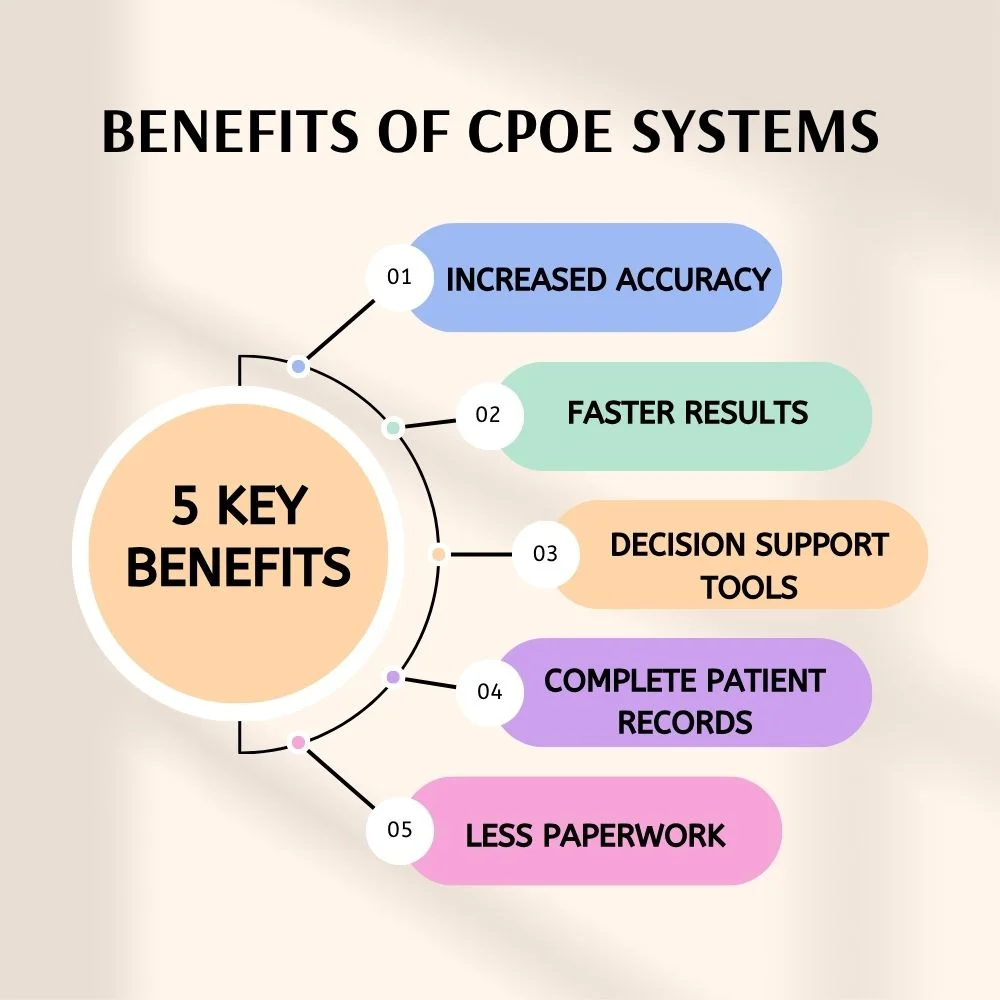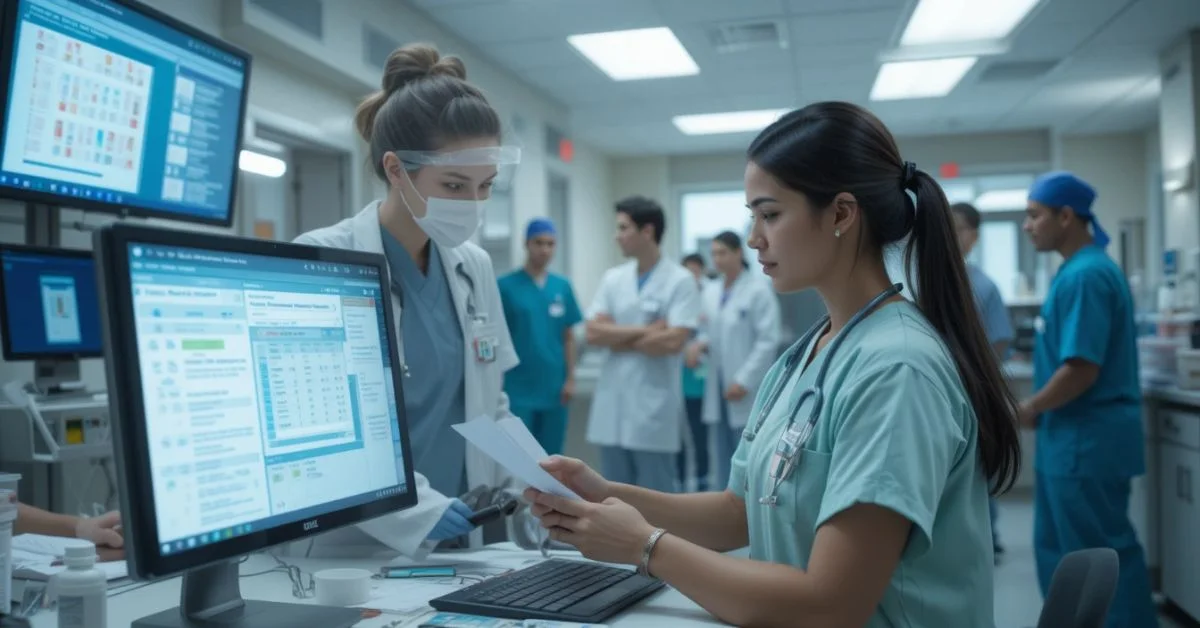In the world of healthcare, many terms and abbreviations are used every day. One of those abbreviations is CPOE. If you’ve ever come across this term and found yourself pondering its meaning, rest assured that many others share your curiosity. CPOE stands for Computerized Physician Order Entry.
Understanding the Basics of CPOE
CPOE is a digital tool used in healthcare settings that lets doctors and medical staff enter treatment orders like prescriptions and lab tests directly into a computer system. These orders are sent instantly to the relevant department, removing the need for paper. It’s part of a larger electronic health record (EHR) system and helps reduce errors caused by handwritten notes.
What Does CPOE Do?
CPOE helps improve how orders are managed in healthcare. Instead of writing something on paper and having a nurse or technician carry it to another department, everything is handled electronically.
Here’s what CPOE can be used for:
- Prescribing medications
- Requesting diagnostic laboratory examinations, such as blood analysis or urine testing
- Requesting X-rays, MRIs, or other scans
- Giving instructions for treatments or diets
- Referring patients to other specialists
Why Was CPOE Introduced?
In the past, handwritten notes often caused mistakes. Doctors have busy schedules and sometimes messy handwriting. This may result in mistakes, such as administering the incorrect medication or dosage to a patient. With CPOE, these risks are reduced because everything is typed and stored clearly in a digital system.
Many hospitals started using CPOE to:
- Improve patient safety
- Reduce medication errors
- Save time for doctors and nurses
- Speed up the treatment process
- Improve communication between departments
Benefits of CPOE Systems

There are many reasons why CPOE has become common in modern hospitals. Some of the key benefits include:
1. Increased Accuracy
Doctors type orders directly into the system. This removes the risk of someone misreading a handwritten note.
2. Faster Results
When a doctor orders a test or medicine through CPOE, it’s instantly sent to the right department. This can save hours of waiting time.
3. Decision Support Tools
Many CPOE systems come with built-in tools that alert doctors to possible problems. For example, if a patient is allergic to a certain medicine, the system will show a warning.
4. Complete Patient Records
Since everything is entered digitally, it becomes part of the patient’s electronic health record. This helps doctors see the full picture of a patient’s health.
5. Less Paperwork
Using CPOE cuts down on physical paperwork, which also saves space and makes it easier to find information quickly.
Real-World Example of CPOE Use
Imagine a situation in which a patient is hospitalized with symptoms of chest pain. A doctor examines them and decides they need a blood test, an ECG, and a certain medication. Instead of writing this down and giving it to a nurse to deliver, the doctor enters the orders into the CPOE system. The lab is alerted about the blood test, the ECG technician is notified, and the pharmacy gets the medication request all within seconds.
Common Features Found in CPOE Systems
Most CPOE systems include the following features:
- Order templates: To help doctors quickly choose standard tests or medications
- Drug interaction checks: To make sure new prescriptions don’t conflict with current ones
- Allergy alerts: Warns about drugs the patient might be allergic to
- Duplicate checking: Prevents the same test or medicine from being ordered twice by mistake
- Order tracking: Allows doctors and nurses to follow the progress of an order in real time
Challenges of Using CPOE

While there are many advantages to using CPOE, it can also pose some challenges. It takes time and training for staff to get used to the system. Some common issues include:
- Learning curve: Doctors and nurses must be trained to use the system properly
- High costs: Setting up a CPOE system can be expensive for hospitals
- Technical problems: If the system crashes, it can delay treatment
- Alert fatigue: Too many warnings or alerts may overwhelm users and lead to ignored messages
Even with these issues, most healthcare providers agree that the benefits outweigh the problems.
Who Uses CPOE?
While the name mentions “physicians,” many different professionals use CPOE:
- Doctors and specialists
- Nurses
- Pharmacists
- Lab technicians
- Radiologists
Anyone who is part of a patient’s care team may interact with the system to view or act on orders.
CPOE and Patient Safety
One of the biggest goals of using CPOE is to make healthcare safer. In the past, mistakes in prescriptions and communication could be harmful or even deadly. With CPOE, hospitals can track and reduce these risks by:
- Sending correct instructions instantly
- Storing complete and up-to-date records
- Preventing human errors in communication
CPOE also helps in keeping hospitals in line with safety regulations and guidelines set by national health authorities.
Future of CPOE in Healthcare
As technology keeps growing, CPOE is expected to get even better. Future updates may include:
- Voice entry: Doctors may soon enter orders by simply speaking
- Mobile access: Orders can be entered and reviewed from smartphones or tablets
- AI integration: Smart systems may suggest the best treatment based on the patient’s history
This means faster care, better outcomes, and improved efficiency for everyone involved.
Conclusion
The medical abbreviation CPOE may sound complex at first, but it simply refers to a digital way for doctors to enter orders. It’s part of the bigger move toward using technology to make healthcare safer, faster, and more reliable. Whether you’re a patient, medical student, or curious reader, understanding CPOE helps you see how modern hospitals work behind the scenes. It’s a small part of a bigger system that’s changing how care is delivered every day.



